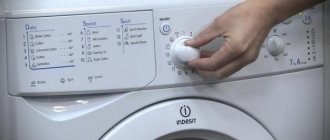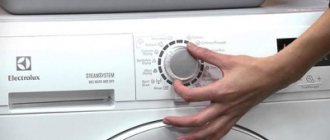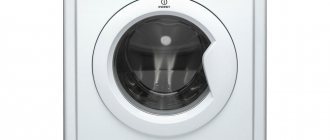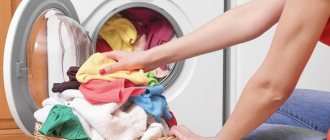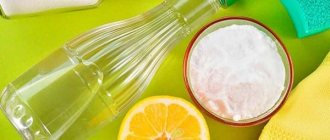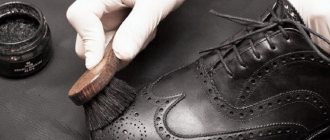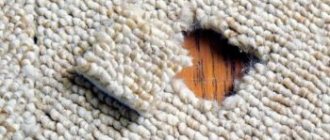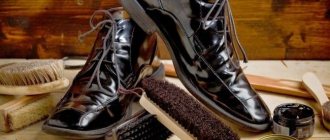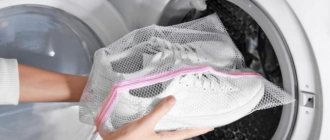Among household appliances, the washing machine takes pride of place. This is due to the fact that the device is used frequently, washing a large amount of laundry. In a house where there is a small child, you cannot do without a home assistant in the form of a washing machine. If the device is not properly cared for, kept tidy and clean, its service life will be reduced. Caring for an automatic washing machine ensures that the equipment will not break down and will be an indispensable attribute of peace and measured life.
Proper care of your washing machine
We must know and always remember that we must take care of our assistant and do spring cleaning for her from time to time. To prevent this, it is necessary to clean these household appliances, and for this it is not necessary to call a specialist, because all the work can be done yourself.
An irresponsible attitude to its use can lead to premature failure or the appearance of an unpleasant odor on clothes.
About water quality
With increased water hardness, scale forms on the internal parts of washing machines - a deposit of calcium and magnesium salts. A heating element covered with a layer of scale can no longer work as before, its performance drops, and over time it completely fails. To check the level of hardness, there are testers in the form of strips. They are sold freely and you can easily find out how hard the water is in your water supply pipes. Why do this? To choose an anti-scale strategy and set the appropriate dosage of special products. Helps against salt deposits:
- Special prophylactic agents - for example, Calgon. They are not able to destroy sediment embedded in the surface, but they effectively prevent its formation.
- Folk remedies - for example, citric acid. It not only prevents the appearance of scale, but also perfectly cleans all the “insides” of the machine from it. For one cleaning of the SMA, take 100–200 g of lemon, pour it into a powder container, and set the temperature to a maximum of 90 °C. There should be no items in the drum during cleaning. After completing the cleaning, wipe the drum and cuff with a soft cloth. Fallen particles of sediment must be carefully removed. You can also wash the machine with a solution of lemon juice and vinegar or soda ash.
- Softening filter. Similar devices are commercially available. They will purify water for all water intake points.
Error in operating the washing machine
- After the next wash, the hatch is closed. You must remember that after washing we always leave the hatch open so that the moisture from the drum evaporates.
- Rubber cuff:
Debris in the cuff leads to an unpleasant odor and the formation of mold.
Water and sometimes small debris remain in the cuff, in its folds, and this leads to an unpleasant odor and even the appearance of mold. And mold can damage the cuff and will have to be replaced. If the mold is superficial, it can be removed with dishwashing detergent. - We use the drum of the machine to collect dirty laundry.
- It turns out that we ourselves create an ideal environment for the appearance and proliferation of mold and bacteria.
- Excess powder or conditioner.
Detergents form a film on the walls.
The reason here lies in the fact that the excess sticks to the walls of the drum, as a result of which an odor appears over time. - Dirty detergent tray.
Dirty tray photo
Whether the detergent is good or bad, it still leaves a film on the walls. Over time, mold appears, and to prevent this from happening, we recommend that you remove the tray once a month and wash it, then carefully wipe it and put it back in place. - The channel where the detergent is supplied is dirty. The mold layer can go further along the channel, into the powder and conditioner flushing compartments. You need to carefully examine the inside of the channel and if the process has already begun there, it is urgently necessary to carry out cleaning. And it should be noted that this happens more often if the tray is dirty; such problems do not happen with a clean powder container.
- The drain filter is dirty.
Dirty drain filter, photo.
The job of the filter is to catch debris so that the drain does not clog. These can be all sorts of things that we forget in our pockets, as well as threads, lint, etc. And we clean the filter once every six months, because all this accumulation begins to rot and creates an unpleasant odor. If you do not clean the filter, in addition to the smell, it can block the drainage of water from the washing machine. - There is or remains water in the machine after washing. Not much of her remains there, more often we may not see her, and the door is closed. This happens because the machine is not connected to the sewer correctly, or if this was not the case before, then the drain pump is malfunctioning. The technician should fix this problem.
- Scale on heating element.
What is scale? It is a deposit of detergents, lint and water impurities. And all this sticks to the heating element; if you rarely use the machine or often wash at low temperatures, the scale begins to smell. - And when washed at high temperatures, the smell is similar to the smell of burning. To prevent this from happening, you must clean the machine from time to time using special products or using citric acid. Lemon juice should be used while washing without laundry at a temperature of 90 degrees.
If all this does not help, then you need to urgently call a specialist.
Correct installation of the machine
After purchasing a washing machine, before using it, it must be installed in place and connected to communications. Both should be done correctly and carefully.
There are transport bolts on the rear wall of the unit - they must be removed. They are installed at the factory to prevent the tank from swinging during transportation, which can lead to breakdown. The mounting points for the bolts are covered with the included decorative plugs. Unscrewed fasteners should be protected, as they may be useful if transportation is necessary.
Important : the location for installing the washing machine must be convenient for its operation, as well as for its further maintenance:
- Installing the unit in the bathroom, although preferable for many owners, high humidity can have a detrimental effect on its operation. Although many Bosch models tolerate humid atmospheres well;
- In the kitchen, such a machine, such as the Ariston Hotpoint model, can be built into furniture or installed in a niche, which is especially convenient when there is a shortage of free space;
- Some install washing machines in the hallway or hallway, if space allows and there is an outlet. For example, many Samsung models operate quite quietly, which allows them to be installed close to the sleeping areas without losing the comfort of the occupants.
When choosing a location, you should carefully weigh everything and choose the best option, taking into account the need to organize a connection to tap water and a drainage system. After choosing a location and installing the machine, it must be connected to a water source. This is usually done using a flexible hose having a diameter of 20 millimeters.
To connect the machine to the water supply:
- Determine the required location in the water supply and cut the thread;
- Install the valve and connect the flexible hose;
- It is advisable to install a mesh filter to prevent small objects and dirt from the water supply from getting into the drum.
After each wash, it is advisable to turn off the tap and clean the mesh filter. This will extend the life of the machine.
Connecting the washing machine to the electrical network is a particularly important step and it is better to leave it to specialists. However, if you have the skills, you can connect the machine yourself, installing a separate outlet with grounding and water protection.
When installing an outlet, you need to take into account that washing machines are usually equipped with power cords about one and a half meters long. Based on this, it is necessary to install the socket so that the distance is sufficient for connection.
Important : It is not recommended to use extension cords when connecting the washing machine to the electrical network, as they do not guarantee safety.
During the operation of washing machines, a situation often arises when, during spinning or even during washing, they begin to shake, vibrate or jump. Most often, the reason for this behavior of the unit is an uneven floor.
If it is not possible to install the machine on a flat floor, then you can use a rubber mat and place it under the legs of the machine. It will partially dampen the sound from vibration. You should not place pieces of linoleum or wooden planks under the car - this will solve the problem only for a while, and then the vibrations will appear again.
To check whether the washing machine is installed correctly, you need to:
- Place your weight on each corner of the top panel of the machine in turn. If they are not pressed down, then the machine is fixed level. Jumping and vibration of the machine during washing is fraught not only with unpleasant noise, but also with serious breakdowns, leading to expensive repairs. After installing the washing machine at the place of future use, it is necessary to check its operation, namely:
- After selecting one of the washing modes, the drum should not stand still, but should rotate;
- There should be no signs of leakage. Otherwise, check the hose connections;
- After turning on the washing machine, there should be no extraneous sounds inside it;
- After washing, spinning and draining should function stably.
Cleaning the water inlet and drain hoses
If you are cleaning your car from odors, you must clean the fill and drain hoses. But before that, they must be disconnected from the washing machine and the sewer. We clean them with a special brush for bottles or a toothbrush; after the entire cleaning procedure, be sure to rinse them under running, warm water.
Dirty hoses are one of the first causes of washing machine failure. The inlet hose is usually clogged with alkali stone, salt from bad water, and the drain hose absorbs all the dirt from washing, over time it begins to rot and forms a stench.
Useful tips
You have learned how to care for your automatic washing machine. Now we will give some tips to help you prevent SMA breakdowns.
- Remember to check the pockets of your clothes before loading them into the drum. Remove any objects from them: coins, buttons, matches, etc.
- Wash bras only in a special bag.
- Use a powder that is machine washable. It should be marked “Automatic”.
When choosing care products for your automatic washing machine, focus on quality. Do not use questionable powders - they will clog the powder receptacle. Low-quality powder is practically not washed off from the tray after washing. Use only products from trusted manufacturers whose quality is beyond doubt.
If you want to figure out how to care for your automatic washing machine, watch the video:
Now you know everything you need to know about caring for your washing machine. Following simple rules will help avoid breakdowns and extend service life.
I am myself!
Some modern models of washing machines have a self-cleaning drum function. It cleans the loading tank from debris, wool, hair, threads, etc. that settles during washing. and resembles the idle wash mode.
- A preliminary cleaning stage is activated, similar to a pre-wash.
- After the preparatory stage, the cleaning itself begins, during which the drum rotates at a speed of 50–150 rpm, and the water warms up to 60 0.
- The last step is to rinse, usually twice, and spin at maximum rpm.
The whole procedure takes about one and a half hours. It must be done at least once a month. Of course, the presence of this quality affects the price of the electrical appliance. But the same familiar master, sharing his experience, revealed a secret: this option can be successfully replaced by timely and thorough care.
Anti-corrosion
The bathroom is a room with high humidity, and rust loves moisture. So the washing machine is at risk and corrosion on an automatic machine is far from uncommon. This spoils the appearance of the electrical appliance and can lead to its breakdown, and a rusted housing can not only “shock” with electric current, but also cause a short circuit. Moreover, rust can remain on washed items. What should you do if you notice characteristic yellow spots?
- Change the “place of residence” of the washing unit: the moisture will finally finish it off.
- Remove rust stains on the body using special anti-corrosion agents, and remove any remaining residue with regular bleach.
- Noticed rust on your laundry? Carry out preventative cleaning with citric acid. If the affected area of the parts is small, this will help.
- Carefully wipe the entire machine dry, leaving no chance for moisture.
- Do not try to clean the rusty part yourself, contact a specialist.
- Corrosion is difficult to remove, so, unfortunately, most often “sick” components will have to be replaced.
Pollution prevention measures
A well-known truth: it is easier to prevent than to eliminate the consequences. This also applies to washing machines. To ensure that your automatic machine is always in order, it is enough to follow a few simple recommendations.
- Do not store dirty laundry in the machine's loading tank.
- Empty the drum of washed clothes immediately after the end of the cycle.
- After each cycle, wipe the automatic machine dry, having first disconnected it from the power supply.
- Leave the door open after each wash for ventilation.
- Remember to periodically clean the heating element, drain filter and hose.
- Place the washing machine in a well-ventilated, dry area.
Which washing powder is best to use?
There is often an opinion among housewives that there is no difference in using washing powder. Therefore, in order to save money, many people use cheap washing powder. This is a wrong judgment.
Cheap powder forms clumps. When washing, it is not completely removed, remaining in the tray in the form of sediment.
Read the text on the washing powder packaging carefully. Products intended for hand washing cannot be washed in an automatic washing machine. Remember that the powder marked “automatic” is designed specifically taking into account the peculiarities of the processes occurring in the washing machine.
Strictly monitor the amount of washing powder you put into the machine. A large quantity does not guarantee the quality of the wash. But it will lead to increased foaming and create a threat of failure of electronic components and rubber parts of the unit. Pour the amount of washing powder recommended by the manufacturer into the tray.
Biocare
The bio-care or bio-wash function, which some modern washing machines are equipped with, is based on the use of detergents with enzymes. These active components remove food and other stains well and perfectly refresh linen.
Since enzymes are destroyed at high temperatures, bio-care involves a long wash in low-heat water. The result is excellent: the dirt is washed away, the laundry smells fresh and clean.
But bio-care is a rather expensive way to clean clothes, since powders with enzymes are not cheap, and due to the increase in washing time, the consumption of water and electricity increases.
Internal descaling of the washing machine
To prevent scale from accumulating and causing problems in the operation of the device, it is necessary to periodically carry out internal cleaning. A variety of modern means can be used for this. For example, to combat scale during washing, it is recommended to add “Antiscale”.
But various folk remedies are no less effective:
Cleansing with vinegar
Simple acetic acid can be used to clean the washing machine from various types of contaminants. The cleaning procedure is carried out according to the following scheme:
- You will need to take approximately 2 tbsp. l. acetic acid (acetic essence).
- The product is slowly poured into the device - directly into the drum.
- The machine turns on and the long-term wash mode is set.
- The washing temperature is set to the highest possible level, making the procedure more effective.
- The machine must operate for at least 5 minutes in the set mode.
- After this time, “pause” is pressed, but the acetic acid is left inside the device for an hour. This time will be enough for the product to dissolve existing contaminants, but without causing harm to the machine parts.
- After the specified time has elapsed, the washing mode ends.
- The remaining acid is removed from the machine, but to completely remove it, it is recommended to do a short wash.
- At the end of the cleaning procedure, all internal parts must be rinsed with plenty of clean water and wiped with a dry cloth.
- Don’t forget to wipe the rubber seal, as well as the inside of the door. To do this, it is recommended to use a solution consisting of water and vinegar (the components are taken in equal quantities).
When performing this cleaning method, it is prohibited to use any additional detergents.
Lemon acid
Using citric acid helps clean the washing machine from unpleasant odors, mold, limescale and dirt residues. But for this you need to use only fresh product. The procedure itself is performed in the following way:
- You will need to take at least 200 g of citric acid.
- The product is poured into the washing powder tray or directly into the drum of the machine.
- The device turns on, the long-term washing mode is set, and the temperature should be at least 60 degrees.
- The active substances of citric acid have an intense destructive effect on the structure of limescale. As a result, it peels off easily and quickly from the internal surfaces of the machine.
- As soon as the washing program is completed, the rinse cycle starts, which removes any remaining citric acid.
- It is recommended to carry out this procedure for cleaning an automatic washing machine no more than once every 3 months.
It is strongly recommended not to use citric acid too often to clean household appliances, as this can cause early wear of rubber parts.
Cleansing with baking soda
If dirt has accumulated inside the washing machine, it is recommended to use simple baking soda, which is found in every home, to remove it. This product effectively cleans the drum walls and does not harm the device. The cleaning procedure is carried out according to the following scheme:
- Take equal amounts of clean water (room temperature) and baking soda.
- All components are thoroughly mixed, as the soda crystals must completely dissolve.
- Take a sponge, soak it in the resulting cleaning composition and wipe the surface of the drum.
- Remains of the product must be washed off with plenty of clean water.
- You need to wipe both the metal parts of the machine and the rubber ones, because dirt also accumulates on their surface.
- Once the remaining soda solution has been removed, wipe the treated surfaces dry with a clean cloth.
Soda is often used to clean washing machines, because with its help you can remove not only dirt, but also mold. It is recommended to carry out this procedure once every 7 days, regardless of whether the device is in use or not.
